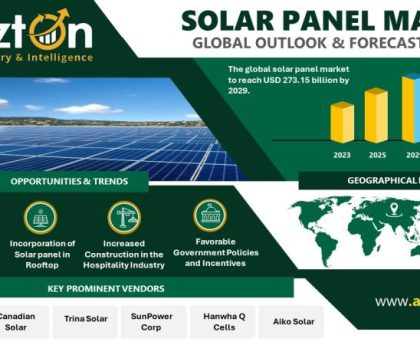#inform-video-player-1 .inform-embed { margin-top: 10px; margin-bottom: 20px; }
#inform-video-player-2 .inform-embed { margin-top: 10px; margin-bottom: 20px; }
Recycling process •An ideal recycling system would recover as much material from solar panels as possible. There are different methods to recycle solar panels, which can include some or all of the following three steps: •Removal of the frame and junction box •Separation of the glass and the silicon wafer through thermal, mechanical or chemical processes; and/or •Separation and purification of the silicon cells and specialty metals (e.g., silver, tin, lead, copper) through chemical and electrical techniques.
The U.S. Environmental Protection Agency predicts by the end of the decade, the country will have more than a million tons of solar panel waste.
That number is set to increase tenfold by 2050. So what happens to solar panels at the end of their lifespan?
For federal and state officials, the solutions are to safely discard the waste or recycle/reuse the panels.
“Solar panel recycling is still fairly new because there hasn’t yet been a great volume of panels that have reached the end of their useful life,” said John Repetz, the deputy director of regional communications for the Southcentral Regional Office of the state Department of Environmental Protection.
The average lifespan of a solar panel is around 25 years.
The EPA said tests conducted on solar panels revealed lead and cadmium in the semiconductors and solders, which are harmful to the environment, humans and animals. Repetz said solar panels are assembled in a way that limits direct exposure.
Both the EPA and DEP have regulations, permitting and guidelines to be followed for setting up solar panels and removal.
“Most or all solar panels being installed today pass rigorous standards set by the federal Resource Conservation and Recovery Act, and manufacturers adhere to various performance and safety standards,” Repetz said.
The DEP has a hazardous waste program that develops and enforces regulations on hazardous waste management, issues hazardous waste transporter licenses, provides technical support and guidance for minimizing and managing waste containing toxic chemicals, provides guidance for permitting, performs inspections, gives grant funding for removal and coordinates a correction action program under the RCRA.
The EPA states at the end of their lifespan, components from panels can be recycled, such as glass, aluminum frames, cooper wire and plastic junction boxes.
The frames and junction boxes are removed, the glass and silicon wafer are separated through a thermal, mechanical or chemical process and the silicon cells and specialty metals are separated and purified through chemical and electrical techniques.
“As more panels reach the end of their life, dedicated solar panel recycling facilities will be better able to maximize the efficiency of recycling,” Repetz said. “The DEP’s recommendation is to send solar panels to a recycler that can handle them.”
Solar panels can also be reused by either direct reuse or after a refurbishment.
Once any waste materials are removed, the solar panels can also be safely disposed of in landfills, he said.
Jerry Zona, the director of the Lawrence-Mercer Recycling Solid/Waste Department, said the region has not seen much in terms of solar panel recycling, as many of the panels and arrays have been installed within the last few years.
“It’s a little bit too early,” Zona said.
Zona said when the time comes, the department will likely contract the collection and removal of solar panels and their components, similar to what is done with other hazardous materials.
He also expects more specialty solar panel recycling companies to open in the future, towards the end of the first generation of panels’ lifespan, similar to how specific companies were formed to safely dispose and recycle components from CRT-TVs.
Repetz said solar panels can help clean the air, reduce the health impacts of pollution and make water sources cleaner while being a more affordable and reliable source of renewable energy that can help lower energy costs and create jobs. Rain and snow, he said, can clean the panels, which still take in indirect sunlight on cloudy days.
“There’s definitely a need for it,” Zona said.
#inform-video-player-3 .inform-embed { margin-top: 10px; margin-bottom: 20px; }
This post was originally published on 3rd party site mentioned in the title of this site






